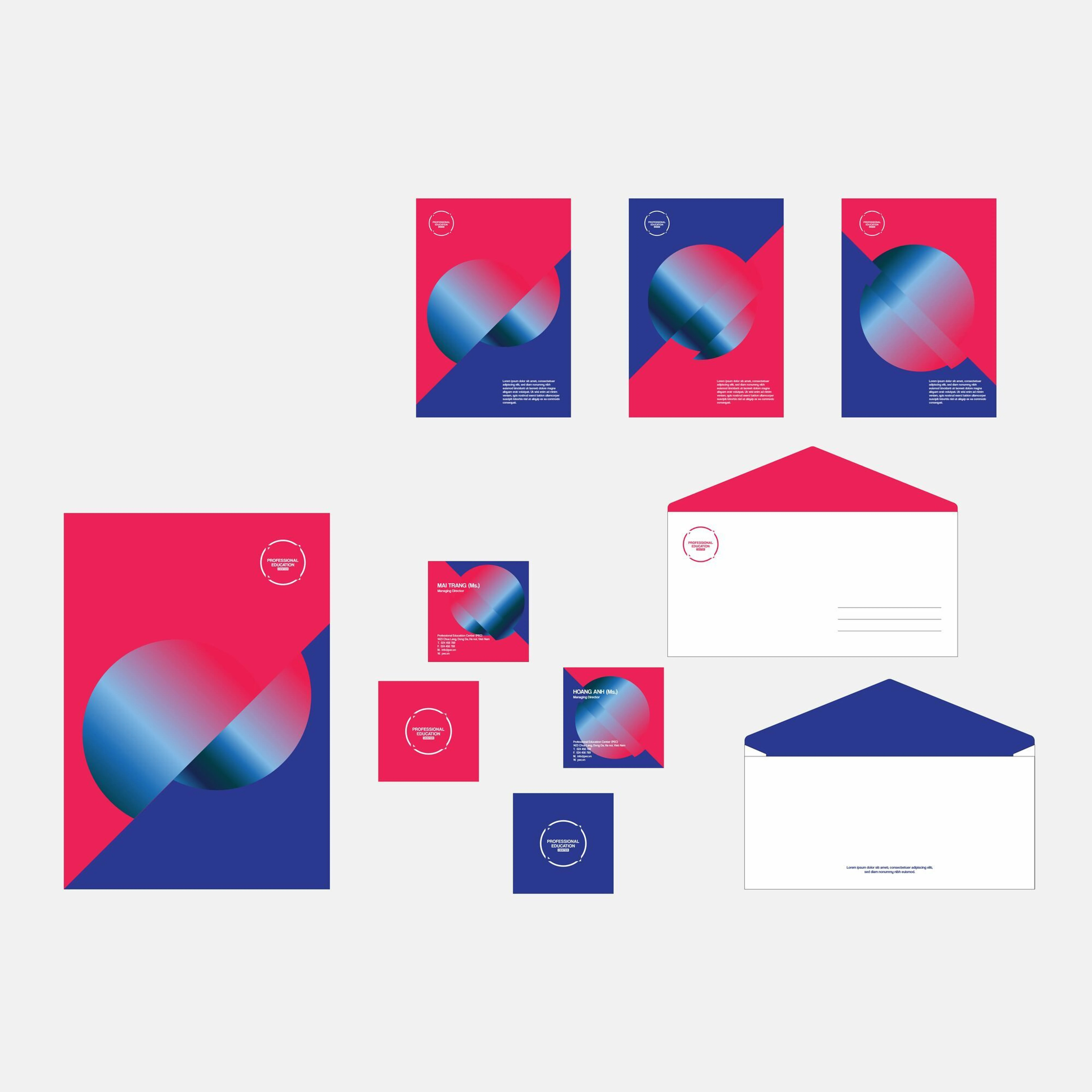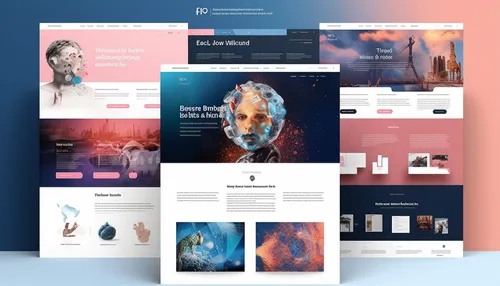A website is often the first point of contact for a potential customer with our brand. It is the website that serves as a virtual business card, shaping the first impression and opinions about our company.
A website is not only a place where we present our offer, but also a space where we build relationships with recipients. This is where we have the opportunity to present our expert knowledge, share valuable content, or introduce the team behind the brand. Each of these elements has an impact on the perception of our company as a credible and trusted partner.
For example, if we run a dental office, our website should not only contain information about the services offered and a price list, but also present our team of doctors along with their qualifications and experience. Posting photos from the interior of the office, presenting modern equipment and sterile conditions, will additionally strengthen the feeling that we are in the hands of professionals. Such elements simply build patient trust and encourage them to use our services.
First impression - appearance and functionality of the site
User attention is a scarce commodity these days, so first impressions are extremely important. A website has only a few seconds to convince a visitor that it’s worth staying and exploring its content. What they see first can determine whether they want to explore the site further or leave it for a competitor.

Professional design and content layout
Let's say we're looking for information on healthy eating. We come across two pages - one has a modern, aesthetic look, with legible font and a well-thought-out layout of content. The other looks like it was created in the 90s, with a chaotic structure and text that's hard to read. Which one do we consider a more reliable source of information? The answer is obvious - the first one.
A professional website design not only attracts attention, but also builds trust. An aesthetic appearance, consistent with the brand's visual identification, gives visitors the feeling that they are dealing with a company that cares about the details and quality of its presentation. A well-thought-out layout of content, with clearly separated sections and headings, makes it easier to find the information you are looking for and shows that we understand the needs of our recipients.
Navigation on the site should also be intuitive and lead the user by the hand. It is important that the menu structure is logical and consistent with the content of the page. It is also worth taking care of the search engine, which will allow you to quickly find the topics of interest to you.
Responsiveness and correct display on various devices
Currently, 70% of people use the Internet using some kind of mobile device, which is why a responsive website is no longer a nice addition, but a necessity. A website that does not adapt to different screen resolutions and requires constant scrolling or zooming will quickly discourage the user.
A responsive website that smoothly adapts to mobile devices gives the impression of being modern and focused on the needs of the user. This translates into the perception of the brand as credible and trustworthy.
In the context of mobile devices, the efficiency of the website is also particularly important. A website that loads too long not only frustrates the user, but can also be considered unprofessional. Although smartphones are becoming more and more efficient, they are still not able to process as many operations as computers.
A fast-loading website not only improves the user experience, but also signals that our company is investing in reliable infrastructure and cares about the comfort of customers.
Valuable and up-to-date content
In addition to attractive design and intuitive navigation, the key to building website credibility is high-quality, valuable content. This is what makes visitors perceive our company as an expert in a given field and willingly return to our site.
High-quality, unique content tailored to the target group
In conversations with clients, I always emphasize how important it is to create content that not only attracts attention, but also provides real value to the recipient. Unique content tailored to the needs of the target group is the basis for building trust and authority in the industry.
Let's imagine that we are looking for advice on how to care for skin after the age of 40. We come across a beauty blog, where we find an article on exactly this topic. The text is written in an accessible language, contains practical tips and products tailored to the needs of mature skin. What's more, the advice is supported by expert knowledge and research. Such valuable content not only satisfies our need for information, but also builds trust in the brand behind the blog.
Regular publication of new, up-to-date information
In an era of a dynamically changing world and the vast amount of junk content generated by AI, a regularly updated website is a must-have. Nothing undermines credibility like outdated, outdated information. Regularly adding new, fresh content shows that our company has its finger on the pulse and is up to date with industry trends.
What's more, Google also appreciates regularly updated websites, which translates into better positions in search results.
Expert articles and advice that build authority in the industry
It has long been known that content is king. But for this king to build our authority, it must be of expert quality. A company website is the perfect place to share knowledge, case studies, advice or trend analyses. Such content not only attracts visitors, but also makes them perceive our brand as a leader in the industry.
Let's imagine that we run a company offering project management software. On our blog, we regularly publish articles about management methodologies, productivity hacks or case studies showing how our tool helped companies increase their efficiency. A potential client, after familiarizing themselves with this content, will see that we rather know our stuff. Of course, if our content is actually valuable :)
Linguistic and stylistic correctness of texts
The last but not least important element is taking care of the linguistic and stylistic correctness of the published content. Spelling mistakes, typos or unclear wording are the shortest way to damage the image. That is why it is worth taking care of thorough proofreading and editing of texts before they are published.
Of course, everyone makes mistakes. To reduce the chance of their occurrence, it is worth using plugins such as LanguageTool or asking ChatGPT to check the text for spelling and style of expression. From my own experience, I can say that these tools cope with correct spelling better than the average person.
Transparency and completeness of information
Building the credibility of a website is not only a matter of attractive design and valuable content. Equally important is the transparency and completeness of the information presented. Let's show that we are a real company and not another bush creation.

Introducing the team and the people managing the company
People trust people, not anonymous entities. That is why it is so important for the website to have a section presenting the team and people managing the company. Photos, names and positions of key people give the brand a human face and build trust.
Let's assume that we are looking for a marketing agency to which we will entrust the promotion of our business. On the website of one of the companies, we find the "Our team" tab, where we see photos and biographies of specialists in social media, SEO, content marketing. We can learn about their experience, qualifications and even interests. Such a procedure not only shows the human side of the company, but also gives us the certainty that competent professionals are behind the brand.
Clearly defined rules of cooperation
Transparency also includes presenting the principles and course of cooperation to a potential client. The most common objection I encounter when presenting this to clients is: "Adam, but if we describe how we work, the competition will see and there will be a problem." And although at first glance this objection is correct, after a longer analysis we see that it is very unfounded.
If the competition wants to know our exact process of service implementation, they will do it anyway! After all, they can always use the old number and call us posing as a potential client.
So since we already know that not describing the cooperation process does not protect us from anything, we should meet the clients halfway. Let's show that we know what we are doing and have the entire process well thought out. Let's describe how the guarantee for our services works and what involvement of the client in the process will be necessary. Simply explain everything that is unclear and refute any objections the client may have. Thanks to this, the client will feel safer.
References and customer reviews
Customer references and reviews are one of the most effective ways to build website credibility.
I always encourage clients to create a section on the website presenting references and logos of companies that have already used their services or products. Such a presentation of satisfied customers acts as social proof and builds trust among potential recipients.
Let's imagine that we are looking for a company offering accounting services. On one of the pages we find the "Our clients" section, where we see logos of well-known brands and references from their representatives. We read how they improved their financial processes and saved time thanks to cooperation with this company. After such an opinion, we will most likely think to ourselves: "They really know what they are doing".
The opinions of other users are currently one of the main sources of information influencing purchasing decisions. That is why it is so important to have a section on the website with reviews of the products or services offered. Honest, authentic opinions build trust and help potential customers make a decision.
Case study
Case studies are a powerful tool for building trust, especially in B2B services. They are elaborate stories showing how a company helped its customers achieve specific goals or solve problems. Such a case study is not only proof of the effectiveness of the offered solutions, but also a chance for potential customers to identify with the presented story.
A well-prepared case study should contain several key elements:
- Challenge description: Presenting the problem the client faced before using the company's services.
- Solution used: Detailed description of the implementation process and tools used.
- Achieved results: Specific, measurable effects of cooperation, preferably supported by numerical data.
- Client Testimonial: Direct quote from a representative of the company for which the project was carried out.
What's more, case studies are an excellent carrier of long-tail keywords that can attract people looking for very specific solutions to the website. For example, the phrase "optimization of production processes in a furniture factory" can perfectly match the search needs of a potential customer.
It is also worth remembering to properly display case studies on the website. They can be a separate section in the main menu or presented on the main page in the form of rotating banners with key information and a link to the full content.
Additionally, case studies work great as content for further use in marketing activities. They can be the basis for creating infographics, presentations or short videos, which increases their reach and impact on potential customers.
Consistent visual identification and communication
The logo and company colors on the website build brand recognition
When a customer goes to a company's website and sees a well-known logo and distinctive company colors, they immediately feel that they are dealing with a professional business. This visual consistency between the website and the company's other marketing materials builds trust. It shows that the company cares about details and has a coherent image strategy.
When you go to a well-known coffee chain's website and see the same logo and colors that you know from their premises and packaging. It simply makes you feel confident, knowing that you are in the right place.
A uniform communication style enhances the authenticity of the company
The way a company communicates on its website has a big impact on how it is perceived. A consistent style and tone of voice across all sections of the site—from product descriptions to the company blog—shows that there is a well-thought-out communication strategy in place. This builds a sense of cohesion and authenticity about the company.
If you know a clothing brand from their relaxed, friendly style of communication in stores, you expect the same on their website. When you find a similar tone there, you know it’s the same authentic brand that you trust.
Customer support and service

Easy contact increases trust in the company
A website that offers a variety of easy-to-access contact methods shows that the company is open to communicating with its customers. This builds trust and credibility.
When you visit a store’s website, you’ll usually see a clearly displayed phone number, email address, and live chat box. This variety of contact options makes you feel more confident, knowing that you can easily get help if you need it.
The FAQ section demonstrates understanding of customer needs
A well-prepared FAQ section on a website shows that the company understands its customers and anticipates their needs. This builds the image of the company as expert and customer-oriented.
Are you considering purchasing an online service subscription? On the website, you should be able to find a comprehensive FAQ section that answers all your questions about the terms of the contract and cancellation. This transparency of information makes you perceive the company as honest and trustworthy.
Quick response to inquiries shows that we treat our customers as a priority
The way a website presents its customer response policy has a big impact on how a company is perceived. The promise of a quick and professional response builds trust.
Usually, online stores' websites state that they respond to all inquiries within 24 hours. Additionally, there is a contact form with the option to track the status of the inquiry. This gives you the feeling that the company takes communication with customers seriously.
Summary
A website is much more than just a digital business card for a company - it is a powerful tool for building credibility and trust among potential customers. Through professional design, valuable content, transparency of information and effective communication, a website can become a key element in building a strong brand position on the market.
Investing in a high-quality website is an investment in the future of the company. Most interactions with customers begin online, neglecting this aspect can cost you potential customers and business opportunities.
Remember that a credible website is not just a nice design or catchy slogans - it is a coherent, well-thought-out strategy for presenting the company that builds trust, demonstrates competence and encourages you to establish a long-term relationship with the brand.

Adam Naworski



